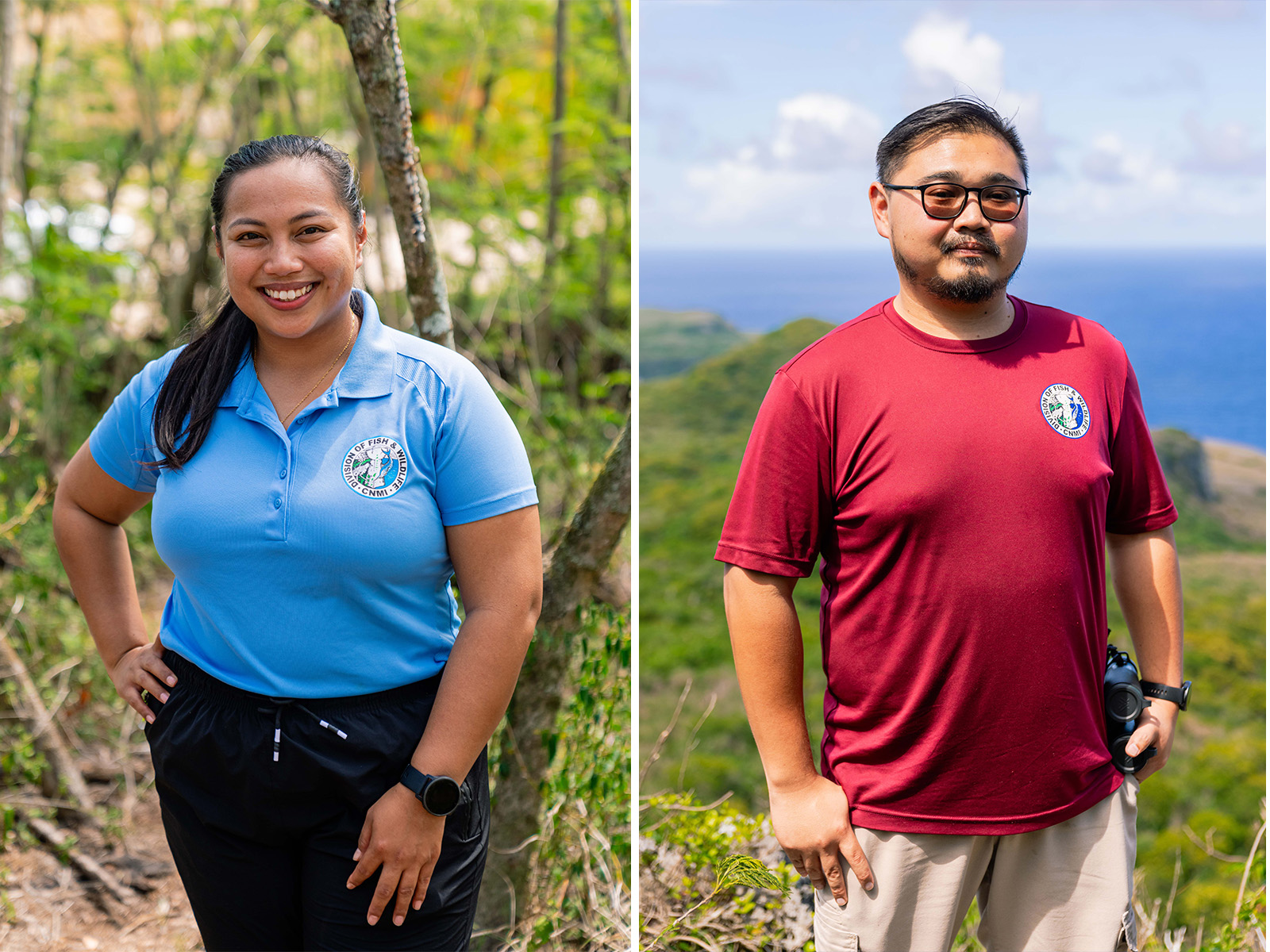Amanda Santos and Lee Roy Sablan Jr. have gone from graduating Proas of the Northern Marianas College to actively playing a crucial part in the CNMI’s bird conservation efforts at the Division of Fish and Wildlife (DFW) under the CNMI Department of Lands and Natural Resources (DLNR).
Santos, a Natural Resources Management graduate from NMC in 2014 and a Fisheries and Wildlife Science graduate from Oregon State University in 2017, is a wildlife Biologist for DFW and leads the CNMI’s Avifauna conservation projects. She works with island endemic, threatened, and endangered bird species.
Sablan, also a Natural Resources Management graduate from 2012, is an assistant Wildlife Biologist for DFW and works with Santos on wildlife conservation projects. He also is responsible for running a project for wildlife restoration while also assisting with projects run by other biologists.
When discussing what motivated them to pursue their degree at NMC, they discussed the importance of staying close to home and their love for their local environments.
“As an indigenous person of the CNMI, the CNMI’s people, land, water, and resources have always been near and dear to my heart, so I wanted to pursue a degree that would allow me to help the CNMI and its resources. I come from a close-knit family, and my family has always sculpted many of the decisions I had to make,” said Santos.
She added, “Attending NMC was always my first choice because it allowed me to stay close to home, and my family while still receiving an education. Because of the CNMI Honor Scholarship, SHEFA, and FAFSA, it made attending NMC affordable.”
“My motivation stems from a deep love for the environment and the unique ecosystem our islands are home to. Aside from affordability and the closeness to home, NMC had everything I needed at the time to help me grow and learn about our islands and the resources it provided,” said Sablan.
When looking back at their time as NMC students, they cited their positive experiences with the various school clubs housed at the college as well as travel opportunities that came with the extracurriculars.
“Some of my favorite memories involved the revitalization of the NRM program and the starting of the Environmental Natural Resource Organization (ENRO) club. I became the first VP of the club and through the program and club affiliation, I was able to travel to Costa Rica and other internship programs,” said Sablan.
“One of my favorite memories while attending NMC was participating in a Summer Undergraduate Research Experience in Costa Rica. This was my first time traveling outside the CNMI and it was very rewarding! I got to network with other students/ mentors from different parts of the world. My research then got chosen to be presented at the Society for the Advancement of Chicanos/Hispanics and Native Americans in Science, and thanks to funding from NMC I was able to present that research in person in San Antonio, Texas,” said Santos.
The most rewarding part of their job is the ability to travel to study wildlife within the CNMI and knowing that their work is for the benefit of the CNMI.
“I get to travel within the CNMI, including the Northern Islands, and study wildlife and all these studies are beneficial to the CNMI in promoting effective conservation and management of native birds in hopes we can co-exist with them,” said Santos.
Sablan added, “Knowing that everything we try to accomplish is to the benefit of the CNMI and for the protection of the unique organisms that inhabit these islands, is the most rewarding aspect of my job.”
For current Natural Resources Management majors and students planning to pursue a similar career path, they emphasized the importance of using any resources available and knowing there’s more than one path to achieving your degree.
“Don’t be afraid to ask for help – use all the resources that are available. Take advantage of your instructor’s office hours, get a tutor if needed, and form a study group. You don’t have to go at this alone! Networking is key,” Santos said.
“If this is your goal just know that there is always more than one path to follow for the same finish line,” Sablan said.


